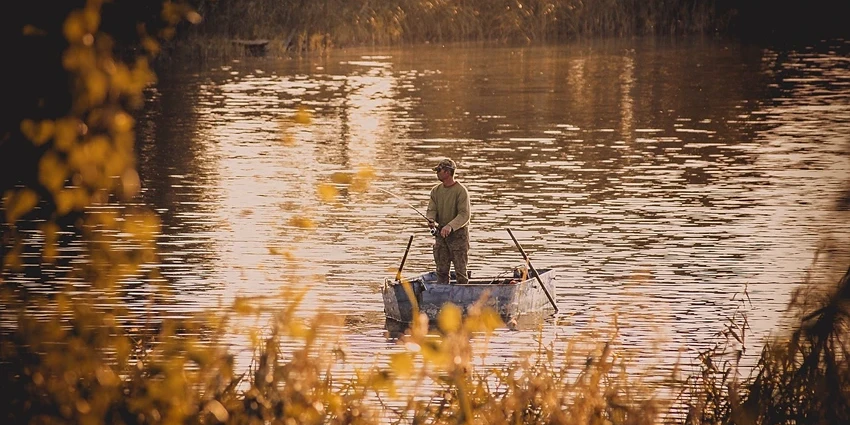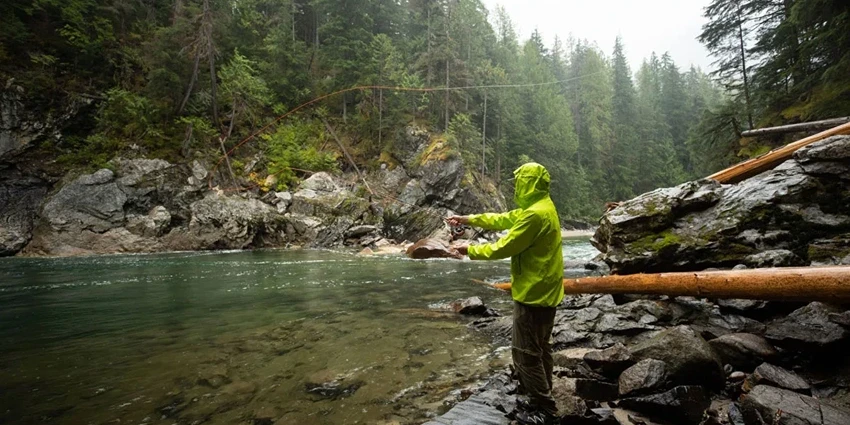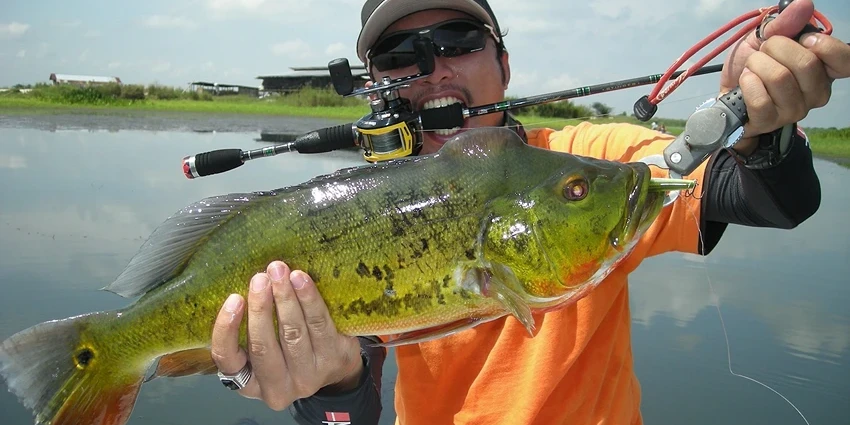All products were chosen independently by our editorial team. This review contains affiliate links and we may receive a commission for purchases made. Please read our affiliates FAQ page to find out more.
Fishing isn’t just a hobby; it’s an adventure that connects us with nature’s rhythms and challenges our skills. When it comes to freshwater fishing, the right lure can make all the difference. Whether you’re a seasoned angler or just starting, understanding how to effectively use fishing lures can significantly enhance your fishing experience.
Diving into the World of Fishing Lures
The realm of artificial lures might seem vast, but don’t worry, it’s all about mimicking baitfish. Let’s explore the different types of lures and how they can be used to outsmart the fish.
Types of Freshwater Fishing Lures
- Spinnerbaits: These flashy friends are great for attracting attention with their spinning motion.
- Crankbaits: Dive deep or stay shallow; crankbaits are versatile for different water depths.
- Soft Plastics: Mimic almost any type of baitfish or insect with these adaptable lures.
- Topwater Lures: Create a splash on the surface to entice those fish looking for an easy meal.
Table: Characteristics of Common Freshwater Lures
| Lure Type | Ideal Conditions | Target Species |
| Spinnerbaits | Murky Water | Bass, Pike |
| Crankbaits | Deep Waters | Trout, Walleye |
| Soft Plastics | Weedy Areas | Bass, Crappie |
| Topwater | Calm, Clear Water | Bass, Top Predators |
Matching Lures with Fish Species
Choosing the right lure for your target species is crucial. Here’s a quick guide:
Bass Fishing
- Spinnerbaits: Perfect for bass, especially in weedy or murky waters.
- Soft Plastics: Mimic worms or creatures bass can’t resist.
Trout Fishing
- Crankbaits: Imitate small fish that trout love.
- Spoons: Their reflective surface and movement are irresistible to trout.
Pike and Walleye
- Larger Lures: These predators prefer bigger bait.
- Bright Colors: Attract these visually keen fish.

Techniques for Using Fishing Lures
Using lures isn’t just about casting and waiting. It’s an art that involves understanding fish behavior and adapting your techniques.
Casting and Retrieval Techniques
- The Steady Retrieve: Keep it simple and steady, especially for beginners.
- Jerk and Pause: Mimic injured fish to trigger predatory instincts.
- Vary Your Speed: Keep the fish guessing and interested.
Seasonal Strategies
- Spring: Use brighter colors and slower movements as fish are lethargic.
- Summer: Go for aggressive retrieves; fish are active and hungry.
- Fall: Time for larger lures as fish bulk up for winter.
Color and Size Selection
- Clear Water: Natural colors work best.
- Murky Water: Bright and reflective lures stand out.
Lure Maintenance and Care
Taking care of your lures ensures they remain effective and last longer. For comprehensive tips on maintaining your fishing tackle, check out our detailed guide on fishing tackle maintenance.
Cleaning and Storing Lures
- Rinse with Fresh Water: Always clean your lures after use.
- Proper Storage: Keep them organized and dry to prevent rust.
Sharpening Hooks and Replacing Parts
- Regular Checks: Ensure your hooks are sharp and free from rust.
- Replacement: Don’t hesitate to replace worn-out parts.
Advanced Lure Fishing Tips
To truly excel in lure fishing, you need to understand more than just the basics.
Reading Water Conditions and Weather
- Water Clarity: Adjust your lure choice based on visibility. Weather Patterns: Fish behavior changes with weather conditions, so should your lure strategy.
- Weather Patterns: Fish behavior changes with weather, so should your strategy.
Understanding Fish Behavior and Habitat
- Feeding Patterns: Know when your target species is most likely to feed.
- Habitat Preferences: Fish in areas where your target species is likely to be found.
Experimenting with Different Lure Combinations
- Mix and Match: Don’t be afraid to try different lure combinations.
- Observe and Adapt: Pay attention to what works and what doesn’t.
Register for our latest in-depth reviews and product round-ups from the experts
Enter your email address below to receive our twice monthly reviews emails.
By entering your details, you are agreeing to our terms and conditions and privacy policy. You can unsubscribe at any time.
Advanced Strategies for Lure Fishing
Taking your lure fishing to the next level involves more than just the basics. Here are some strategies that can give you an edge.

Table: Advanced Lure Fishing Techniques
| Technique | Description | Best Used For |
| Slow Rolling | Slow, steady retrieve close to bottom | Bass in colder waters |
| Burning | Fast retrieve, creating a blur effect | Aggressive predator fish |
| Dead Sticking | Letting the lure sit motionless | Suspicious or slow fish |
Understanding Fish Habitats
Knowing where to fish is as crucial as knowing how to fish. Different species prefer different environments.
- Bass: Often found around structures like logs, rocks, and weeds.
- Trout: Look for them in cooler, oxygen-rich waters.
- Pike: They prefer weedy areas where they can ambush prey.
Frequently Asked Questions
Spinnerbaits are great for beginners due to their ease of use and effectiveness.
Consider water clarity and light conditions. In clear water, use natural colors; in murky water, go for bright or reflective colors.
Yes, but you may need to adjust your technique. For example, use slower retrieves in colder months.
Experimenting with Lure Combinations
Don’t be afraid to mix and match lures. Sometimes, an unconventional combination can yield surprising results.
Table: Effective Lure Combinations
| Lure Combination | Ideal Conditions | Target Species |
| Spinnerbait with Soft Plastic Trailer | Murky, Vegetated Waters | Bass, Pike |
| Crankbait and Jig Combo | Transition Zones (Deep to Shallow) | Walleye, Bass |
| Topwater and Spinnerbait | Early Morning, Calm Waters | Bass, Top Predators |
The Importance of Observation and Adaptation
Paying attention to the environment and fish behavior is crucial. If one strategy isn’t working, don’t hesitate to switch things up.
Table: Environmental Factors and Lure Selection
| Environmental Factor | Suggested Lure Adjustment |
| Cloudy, Overcast | Brighter, Flashier Lures |
| Sunny, Clear | Natural, Subtle Lures |
| Choppy Water | Topwater or Noisy Lures |







